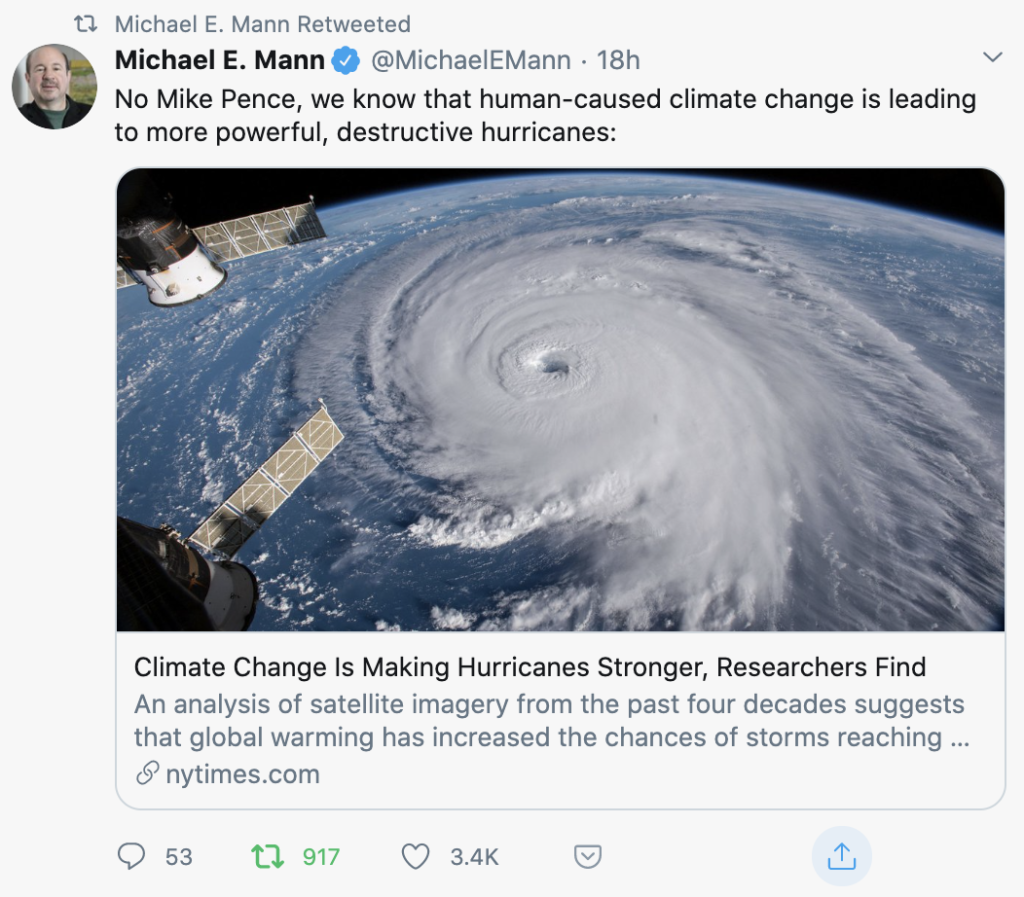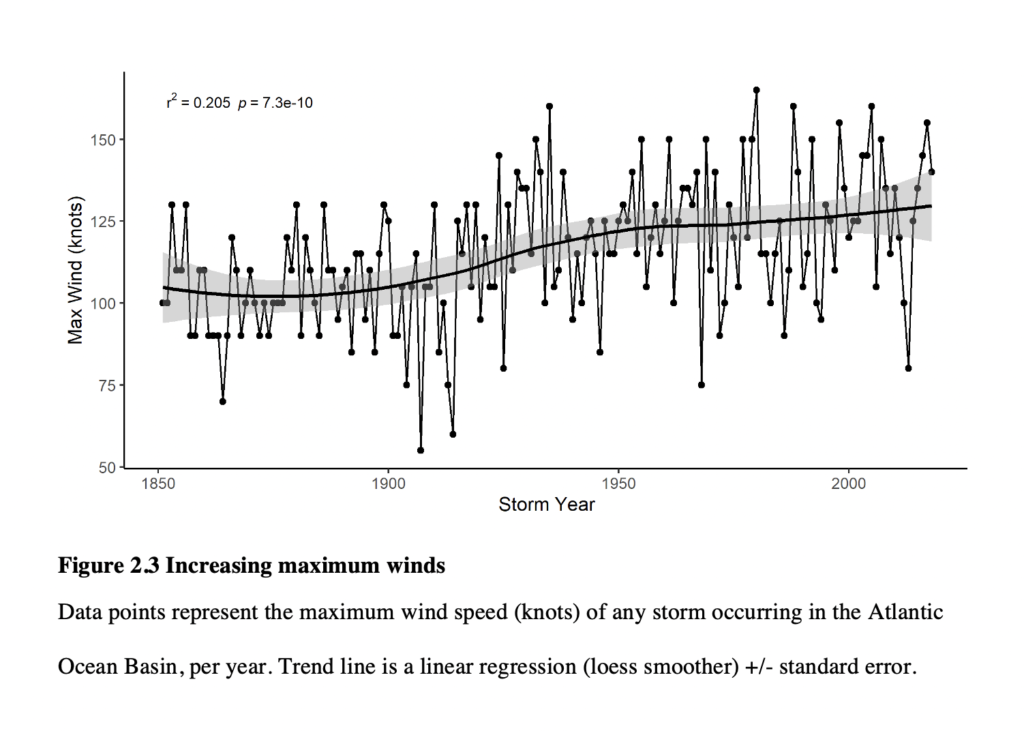At last night’s VP debate Mike Pence was asked about climate change. He stated that the National Oceanic and Atmospheric Administration (NOAA) says there are no more hurricanes now than 100 years ago. He’s wrong. And there are. Substantially more.
Coincidentally, Laura Mudge, a graduate student in my lab in the Department of Biology at the University of North Carolina at Chapel Hill, had just presented her work on this topic in her dissertation defense a few hours earlier!

Her results clearly show Caribbean hurricanes are becoming stronger and more frequent. This was predicted decades ago and is due to the increase in heat (which is the fuel of tropical storms) in the ocean (which itself is due 100% to anthropogenic climate change via greenhouse gas emissions). Other studies have reported similar findings.

The finding and graphic came from Laura Mudge’s PhD dissertation “The resilience of coral reef communities to climate-driven disturbances”. Laura will be turning in the dissertation to the graduate school and submitting it for publication to a journal in coming weeks. For now, here’s a synopsis of the methodology from chapter 2 of Laura’s dissertation “Long term trends of tropical storm impacts on caribbean coral reefs”. Laura made the code and data available on her GitHub site here.
The broader purpose of the study was to measure the effects of hurricanes on Caribbean coral reefs and how that’s changed over the last 10-20 years as both hurricanes and reefs have been altered by ocean warming. Laura used the National Oceanic and Atmospheric Administration (NOAA) Atlantic Hurricane Database (HURDAT) and first simply asked: are hurricanes getting stronger and are they more frequent?



Methods
Historical storm track data was downloaded directly from the National Oceanic and Atmospheric Administration (NOAA) Atlantic Hurricane Database (HURDAT) using the HURDAT package in R (Trice and Landsea 2019). These historical records contain storm track location (latitudinal and longitudinal coordinates), wind speed (knots), low pressure (millibar), status (landfall, hurricane classification), date and time, with variables recorded every 6-hours. Historical track information from the earliest year (1851) to present was used to analyze overall storm patterns in the Atlantic basin. Linear models were used to investigate changing trends in the frequency and intensity of tropical storms over time in the Atlantic.
Functional programming in R was used to catalog which hurricanes cross which reef sites in the coral reef survey dataset. Code for these procedures was adapted from Elsner and Jagger (2013). For each reef, I searched for all historical storms occurring within a 100km radius of the reef site coordinates. Storms of any strength were retained within a 35km radius of the reef coordinates, storms of category 3-5 on the Saffir-Simpson scale were further retained between 35-60km, and only category 4 and 5 storms retained between 65-100km. These buffers are based on previously published hurricane path impacts to coral reefs (Done, 1992; Treml et al., 1997; Gardner et al., 2005). Each observation in the database is a unique reef-storm intersection. Therefore, reef locations appear multiple times in the database, if more than one storm has hit the reef since 1851, and individual storms appear multiple times if they struck multiple coral reef locations along their path.
Historically (1851-2017), approximately 32% of named storms in the Atlantic basin have hit a coral reef location (1,604 named storms, 521 hit a reef) (Figure 2.2). Between 1970-2017, the time period of coral survey sampling, there were 547 storms total, 152 of which crossed over at least one coral reef site, for a total of 10,058 unique site-storm intersections. Out of 3,144 unique coral reef survey sites, 2,754 sites experienced at least one tropical storm since the beginning of storm records in 1851 (87.6% of reefs impacted, 12.4% of reefs unimpacted). Sites that were not impacted were located in the SW Caribbean, along the coast of Panama, Colombia, and Costa Rica.
Leave a Reply